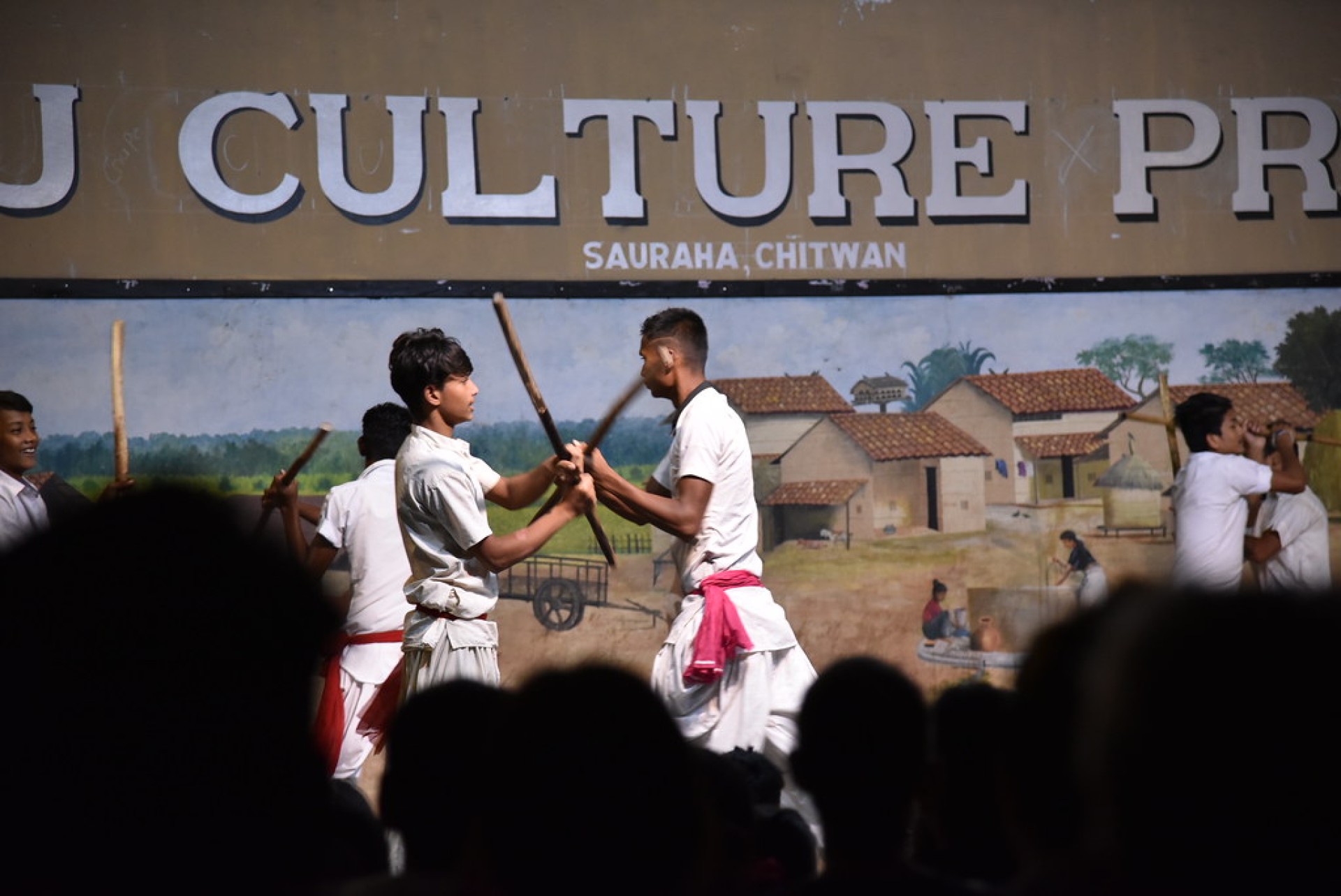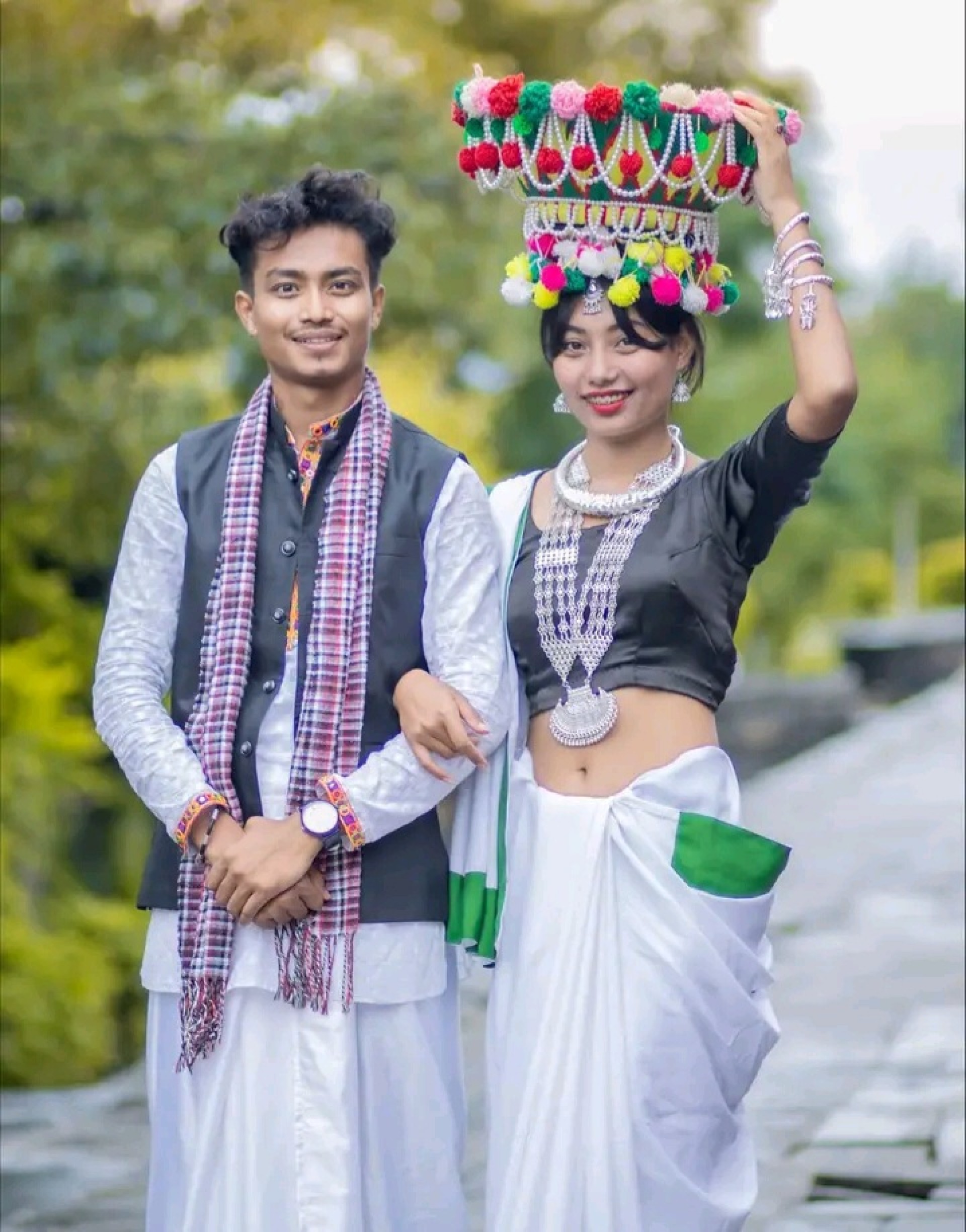-
Places to go
-
Things to do
-
Adventure
Nature
Culture
Wellness
Others
-
-
Festivals & Events
-
Festivals
Event Calendar
-
-
Plan Your Trip
-
Trip Ideas
Travel Details
Book Your Trip
-
- Travel Updates
Exploring Tharu Culture in Chitwan: Nepal’s Indigenous Heritage
Located in the fertile plains of southern Nepal, Chitwan offers more than safaris and jungle adventures—it’s a place where you can step into the world of the Tharu community, one of Nepal’s most captivating indigenous groups. Spend time in their villages, and you’ll quickly see how their art, festivals, and way of life flow effortlessly with the natural world around them, as if the land itself hums to their rhythm.
Who Are the Tharu?
The Tharu people are one of Nepal’s oldest indigenous groups, inhabiting the Terai region that stretches across the southern borderlands. Historically, the Tharu thrived in malaria-infested forests that once deterred outsiders, developing a self-sufficient lifestyle closely connected to the land. Over centuries, they built a rich cultural identity that remains distinct within Nepal’s mosaic of ethnic communities.
Traditional Architecture and Daily Life
In Chitwan’s Tharu villages—such as those near Sauraha or Meghauli—you’ll find traditional houses made from a mixture of mud, clay, bamboo, and thatch. These homes are designed to stay cool during hot summers and warm in the winter.
Many are decorated with mural artwork, often floral or geometric in design, using natural pigments made from clay and ash. This art form, known locally as Mokha in some regions, reflects the Tharu’s aesthetic sense and connection to their surroundings.
Inside, households are simple but orderly, with hand-woven mats, bamboo furniture, and clay stoves—each element crafted with natural materials from nearby forests and fields.
Festivals, Music, and Dance
Tharu culture comes alive during festivals and communal gatherings. The most important celebration is Maghi, observed in mid-January, which marks the Tharu New Year. It’s a time of renewal, family feasting, and social harmony.
Traditional dances—such as the Lathi Nach (Stick Dance) and Jhumra Dance—are performed during festivals and special events. These rhythmic performances often feature coordinated movements with sticks and drums, symbolizing unity and celebration. The beats of the madal (drum) and jhyamta (cymbals) echo through the villages, inviting everyone to join in.

Flavors of the Terai: Tharu Cuisine
Tharu cuisine is a highlight of any cultural exploration in Chitwan. The food reflects the community’s agricultural roots and love of local ingredients. Popular dishes include Dhikri (steamed rice flour dumplings), Ghonghi (snail curry), and fish prepared with local herbs and spices from nearby rivers and ponds.
During festivals, families prepare feasts featuring rice, lentils, vegetables, and meats, often accompanied by homemade rice wine. The flavors are simple yet rich, capturing the Tharu people’s connection to their land and waterways.
The Tharu Museum and Cultural Programs
To gain a deeper understanding of Tharu life, visitors can explore the Tharu Cultural Museum and Research Centre in Bachhauli, near Sauraha. The museum showcases traditional clothing, jewelry, farming tools, fishing nets, and photographs that document the community’s history and artistry.
In the evenings, local groups organize cultural dance performances, giving visitors a chance to experience the music, costumes, and energy of Tharu traditions firsthand.

A Living Heritage
The Tharu culture of Chitwan is more than a relic of the past—it is a living, evolving way of life rooted in harmony with nature. For generations, the Tharu people have lived along the fertile plains and forests of the Terai, cultivating the land, fishing in its rivers, and celebrating the changing seasons with vibrant music and dance. Their traditions—like the rhythmic Lathi Nach (stick dance) and the preparation of Dhikri during festivals—reflect a deep connection to community and environment.
For anyone visiting Chitwan, immersing in Tharu culture means discovering Nepal beyond its mountains—a Nepal where heritage and hospitality intertwine. It’s a chance to witness the artistry of hand-painted clay homes, the generosity of local hosts, and the resilience of a people who have maintained their identity through centuries of transformation. The Tharu of Chitwan remind every traveler that culture, like nature, is most beautiful when it lives and breathes in balance with the world around it.
Nepal Tourism Board is a national tourism organization of Nepal established in 1998 by an Act of Parliament in the form of partnership between the Government of Nepal and private sector tourism industry to develop and market Nepal as an attractive tourist destination. The Board provides platform for vision-drawn leadership for Nepal’s tourism sector by integrating Government commitment with the dynamism of private sector.



